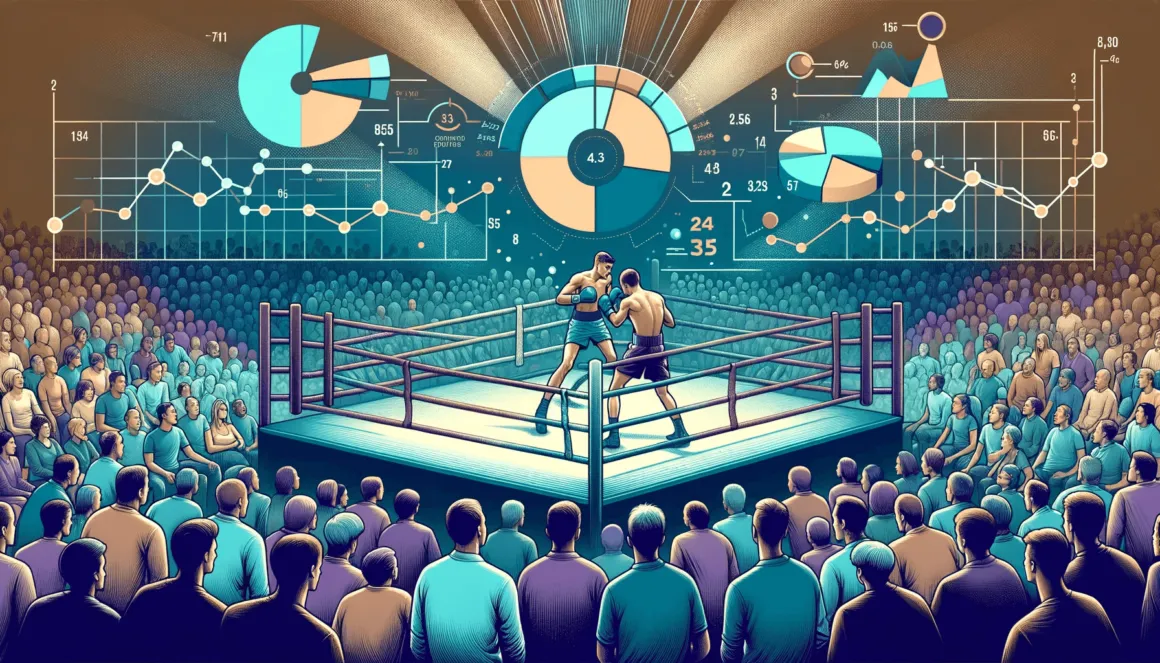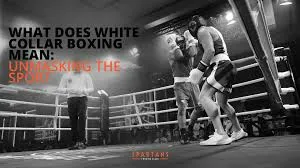Boxing is an age-old sport that has evolved and changed over centuries, with its origins dating back to ancient civilizations. It is a form of combat in which two individuals engage in a physical battle using their fists, with the goal of knocking out their opponent or scoring points through striking techniques.
The history of boxing is a rich and intriguing one, filled with tales of bravery, skill, and controversy. From humble beginnings to becoming a highly popular and lucrative sport, boxing has come a long way. In this article, we will delve into the fascinating history of boxing, exploring its origins, evolution, and significant moments that have shaped it into the sport we know today.
1. The Roots of Boxing: From Ancient Times to the Middle Ages

The Origins of Boxing in Ancient Civilizations
Boxing has been present in various forms in many ancient cultures, including Egypt, Greece, and Rome. Some of the earliest depictions of boxing can be traced back to 3000 BC in ancient Egypt, where illustrations on tombs show men engaged in what appears to be sparring or fighting with gloves.
In ancient Greece, boxing was a popular sport and was featured in the Olympic games. However, it was a brutal and dangerous form of combat, with bare-knuckle fights leading to severe injuries and even death. The Greeks introduced rules and regulations to make boxing safer, such as banning eye gouging and biting, and introducing hand wrapping.
In Rome, boxing was called “pugilatus” and was also a popular spectator sport. Unlike the Greeks, the Romans allowed more brutal and deadly methods, such as hitting with metal studs and leather straps. This led to several fatalities in the ring, and eventually, Emperor Theodosius I banned boxing in 393 AD due to its violent nature.
The Evolution of Boxing in the Middle Ages
After the fall of the Roman Empire, boxing faded into obscurity and was not seen as a legitimate sport. However, it continued to be practiced in various forms throughout Europe during the Middle Ages.
One form of boxing that emerged during this time was known as “fist fighting,” in which two individuals fought with their fists while holding each other’s belts. This type of boxing was popular among the lower classes and was often used in street fights and brawls.
In addition to fist fighting, there was also the emergence of bare-knuckle boxing in England in the 17th century. This eventually led to the formation of the first set of rules for boxing, known as the London Prize Ring Rules. These rules were introduced in 1743 and laid the foundation for modern-day boxing regulations.
2. The Rise of Modern Boxing: From the Marquess of Queensberry Rules to World Championship Matches
Introduction of the Marquess of Queensberry Rules
The Marquess of Queensberry Rules, also known as the Queensberry Rules, is a set of regulations that revolutionized the sport of boxing. It was introduced in 1867 by John Graham Chambers and named after the 9th Marquess of Queensberry, who supported the new set of rules.
These rules included the use of gloves, the introduction of weight classes, and the prohibition of wrestling and grappling. The Queensberry Rules also mandated a round-based system and set the number of rounds to three minutes with one-minute rest periods.
The adoption of these rules marked the beginning of the modern era of boxing, making it a more organized and regulated sport.
The First World Heavyweight Championship Match
The first recognized world heavyweight championship match took place on April 6, 1868, between Tom Allen and John C. Heenan. The fight lasted for 37 rounds, with Heenan emerging as the victor. This event attracted a large crowd, with over 3,000 spectators in attendance.
The championship match paved the way for future world heavyweight matches, making boxing a highly lucrative and competitive sport.
The Golden Age of Boxing: Jack Dempsey, Joe Louis, and Muhammad Ali
The 1920s and 1930s were considered the golden age of boxing, with several legendary fighters emerging during this period. One of the most iconic names was Jack Dempsey, who held the world heavyweight title from 1919 to 1926.
Another notable figure during this time was Joe Louis, who is still considered one of the greatest boxers of all time. He held the world heavyweight title from 1937 to 1949 and successfully defended it for a record-setting 25 times.
In the 1960s, another legendary boxer emerged, known as “The Greatest” – Muhammad Ali. He became the first and only three-time lineal world heavyweight champion, winning numerous world titles and becoming a cultural icon.
3. The Dark Side of Boxing: Controversies and Scandals

Corruption and Match Fixing
As boxing grew in popularity and became more lucrative, there have been numerous controversies and scandals surrounding the sport. One of the most infamous incidents was the “Black Sox Scandal” in 1919 when eight members of the Chicago White Sox conspired to throw the World Series.
In boxing, corruption and match-fixing have also been common, with some promoters and managers rigging fights to ensure their fighters’ victory. These scandals have led to a lack of trust among fans and have tarnished the sport’s reputation.
Doping and Performance-Enhancing Drugs
Another issue that has plagued the world of boxing is the use of performance-enhancing drugs (PEDs). The desire to gain a competitive edge has led some boxers to resort to using banned substances, such as steroids and human growth hormone.
The use of PEDs not only poses a risk to the boxer’s health but also creates an uneven playing field, giving the user an unfair advantage over their opponents. This issue has been a constant battle for boxing organizations and regulatory bodies, with stricter testing and penalties being implemented to combat doping.
4. The Influence of Media: From Radio Broadcasts to Pay-Per-View Events
The Impact of Radio Broadcasts
The introduction of radio broadcasts in the 1920s had a significant impact on the popularity of boxing. It allowed people from all over the world to listen to live commentary of matches, making it more accessible and increasing its fanbase.
Radio broadcasts also paved the way for boxing’s first media superstar, Jack Dempsey, who was known for his charismatic personality and entertaining fights.
The Rise of Pay-Per-View Events
In the 1980s, the emergence of pay-per-view (PPV) television changed the landscape of boxing once again. This model allowed viewers to pay a fee to watch a specific event, usually a highly anticipated fight between two top contenders.
PPV events became a significant source of revenue for boxers and promoters, with some events generating millions of dollars in profits. One of the most famous PPV fights was “The Thrilla in Manila” between Muhammad Ali and Joe Frazier in 1975, which generated over $100 million in revenues.
5. Women in Boxing: Breaking Barriers and Changing Perceptions
The First Female Boxer: Elizabeth Wilkinson
While boxing has historically been a male-dominated sport, there have been instances of women participating in the sport throughout history. One notable figure is Elizabeth Wilkinson, who is believed to be the first female boxer.
Wilkinson was a renowned pugilist in the early 1700s and would often take part in exhibition matches against men. However, women’s participation in boxing was highly controversial and considered taboo at the time.
The Rise of Women’s Boxing in the 20th Century
In the 1970s, female boxing began to gain more recognition and popularity, with several women stepping into the ring to compete professionally. One of the most influential figures during this time was Barbara Buttrick, who was known as the “Mighty Atom of the Ring.”
Buttrick was a pioneer for women’s boxing, paving the way for future female fighters. In 1996, women’s boxing was finally accepted into the Olympic Games, further legitimizing the sport and providing more opportunities for women to compete at an elite level.
6. The Future of Boxing: Technology, Safety Measures, and Global Expansion

Advancements in Technology
The sport of boxing has evolved significantly due to advancements in technology, making it safer and more accessible. Developments such as high-speed cameras and sensors have allowed trainers and coaches to analyze a boxer’s technique and performance, helping them improve their skills and avoid injuries.
In addition to technology used in training and analysis, there have also been improvements in protective gear, such as gloves and headgear, to reduce the risk of injuries during fights.
The Importance of Safety Measures
Safety measures have become a significant focus in modern-day boxing, with organizations implementing stricter rules and regulations to ensure the well-being of boxers. Some of these measures include mandatory medical examinations, weight checks, and suspensions for fighters who have suffered concussions or other injuries.
Organizations, such as the Association of Ringside Physicians, also advocate for stricter safety protocols to prevent long-term health consequences for boxers.
Growing Popularity and Global Expansion
Boxing’s popularity has continued to grow, with the emergence of new markets and increased global interest in the sport. Countries such as China, India, and Mexico have seen a surge in the number of fans and fighters, with several world champions hailing from these nations.
The sport has also found success in other forms, such as mixed martial arts (MMA) and celebrity boxing matches. This has attracted a wider audience and brought more attention to the sport.
Conclusion
In conclusion, the history of boxing is a captivating tale of triumphs and struggles, showcasing the evolution of a sport that has stood the test of time. From its humble origins to becoming a multi-billion dollar industry, boxing has come a long way and continues to evolve with advancements in technology and safety measures.
As we look towards the future, it is exciting to see how the sport will continue to grow and expand globally, providing opportunities for new talent and creating unforgettable moments for fans worldwide. Despite its controversies and challenges, boxing remains a beloved and enduring sport, capturing the hearts and minds of millions around the world.


